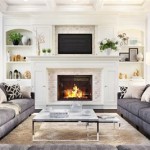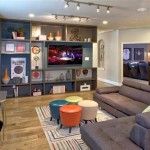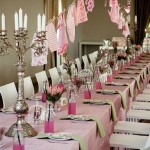How to Decorate Your Living Space
Decorating a living space can be a fun and rewarding process. It is a chance to express your personal style and create a comfortable and inviting environment. However, with so many possibilities, it can also be overwhelming. This article provides practical steps and key points to guide you through the process of decorating your living space, from planning and budgeting to selecting furniture and adding finishing touches.
1. Define Your Style and Purpose
Before diving into the specifics of decoration, it is essential to establish a clear vision for your living space. What kind of atmosphere do you want to create? What activities will you primarily use the space for? Consider your personal preferences, lifestyle, and the overall style of your home. Do you prefer a minimalist, modern aesthetic or a more traditional, eclectic look? Do you envision a space for relaxing, entertaining, or working from home?
Defining the purpose of your living space is crucial in making practical design choices. If you prioritize relaxation, consider incorporating comfortable furniture and soft lighting. For entertaining, focus on ample seating, a well-equipped bar area, and a spacious layout. If you need a dedicated workspace, ensure that the layout provides adequate desk space, good lighting, and a quiet environment.
2. Create a Plan and Budget
Once you have a sense of your desired style and purpose, it is time to create a plan and budget for your decorating project. A well-defined plan helps ensure that all your decorating decisions align with your overall vision. Begin by sketching a floor plan of your living space, noting the dimensions and existing furniture. This will help you visualize how different pieces might fit and flow within the space.
Next, create a budget that outlines how much you are willing to spend on each aspect of the decoration, from furniture and rugs to artwork and accessories. Consider prioritizing your spending based on your needs and preferences. For example, investing in a comfortable sofa might be more important than buying a large number of throw pillows.
3. Furniture Selection
Furniture forms the foundation of any living space, defining the layout and functionality. When choosing furniture, prioritize comfort, functionality, and style. Consider the scale and proportions of the pieces in relation to the size of the room. You don't want furniture that overwhelms the space or makes it feel cramped.
Invest in high-quality furniture that you will enjoy for years to come. Choose pieces with durable frames, upholstery, and construction. Additionally, consider the fabric and finish of the furniture, ensuring they complement your chosen style and color palette.
4. Color Palette and Wall Treatments
The color palette and wall treatments play a significant role in shaping the overall ambiance of a living space. Choose a color scheme that reflects your desired style and creates the desired atmosphere. Neutral colors, such as white, beige, or gray, provide a timeless backdrop and allow for greater flexibility in incorporating accent colors. Bright colors, such as red, yellow, or blue, can inject energy and personality into the space. However, it is crucial to use them strategically to avoid overwhelming the room.
Consider the size and natural lighting of your living space when choosing wall paint or wallpaper. Lighter colors can make a room feel more spacious and brighter, while darker colors can create a more intimate and cozy ambiance. You can also incorporate different wall treatments, such as wallpaper, paneling, or murals, to add texture and visual interest.
5. Lighting and Accessories
Lighting is essential in creating a welcoming and functional living space. Incorporate a combination of natural and artificial light sources to create a balanced and inviting atmosphere. Natural light helps to brighten the room, while artificial light sources provide illumination for specific areas. Consider using a combination of overhead lighting, lamps, and accent lighting to create different levels of illumination.
Accessories are the finishing touches that help to personalize your living space. Use accessories like rugs, throw pillows, curtains, artwork, and plants to add color, texture, and personality to the space. Consider choosing accessories that reflect your interests and hobbies, creating a space that is truly your own.
6. Organization and Storage
A cluttered living space can feel chaotic and cramped. Invest in storage solutions to keep your belongings organized and out of sight. Consider storage solutions like bookshelves, cabinets, ottomans with storage, and wall-mounted shelves. Utilize vertical space by adding shelves or hanging organizers to create a clutter-free environment.
Organization and storage solutions not only help to create a neat and tidy space, but also enhance the functionality of the living area. With your belongings organized, you can easily find what you need and enjoy a more comfortable and relaxing environment.

How To Decorate A Living Room 11 Designer Tips Houzz

Living Room Decorating Tips Ideas And Essentials Spaces

How To Decorate A Living Room 11 Designer Tips Houzz
:strip_icc()/cdn.cliqueinc.com__cache__posts__212361__-2030968-1483470364.700x0c-8571e60cad7b42a981ab29ae10b5c153-497b002f87af4747b2ab38b560e7c0fd.jpg?strip=all)
How To Decorate A Living Room 20 Ideas And Common Mistakes

Living Room Decor Ideas For Your Home Design Cafe

Small Living Room Decorating Ideas 5 Tips To Open Up Your Space

Seven Effective Drawing Room Decoration Ideas Design Cafe

How To Decorate Your Living Room

77 Best Living Room Decor Ideas 2025 Unique

How To Decorate My Living Room Decor For Beginners







